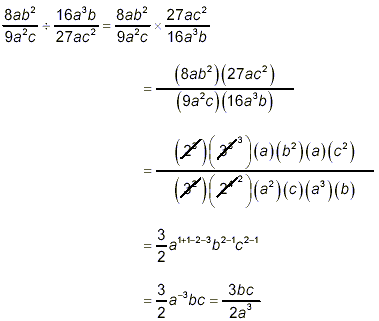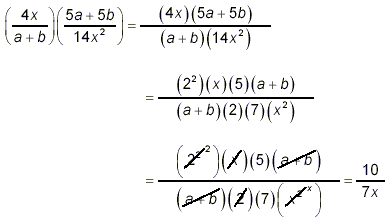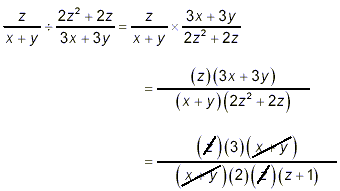Multiplying and Dividing Fractions
Examples with Solutions
Example 1:
Divide 
and simplify the result.
solution: When we rewrite this problem using the divide
symbol, you’ll see that it is very similar to the previous
example:

That is, dividing by 
is the same thing as multiplying by  . .
So, proceeding

as the final answer.
Example 2:
Simplify  . .
solution: Suddenly addition symbols appear in a multiplication
problem! This means we must apply the basic rules of
multiplication a bit more carefully. The strategy is still to
multiply numerator by numerator and denominator by denominator,
and then simplify the result. So

as the final answer. In the second step here, we factored
wherever possible. Then in the third step, we cancelled common
factors between numerator and denominator. When multiplication
involves factors with more than one term, very careful use of
necessary brackets is mandatory.
Example 3:
Divide  . .
solution: This example brings together several operations
illustrated in previous examples. Start by writing\par the
problem completely in mathematical notation:


as the final answer.
|